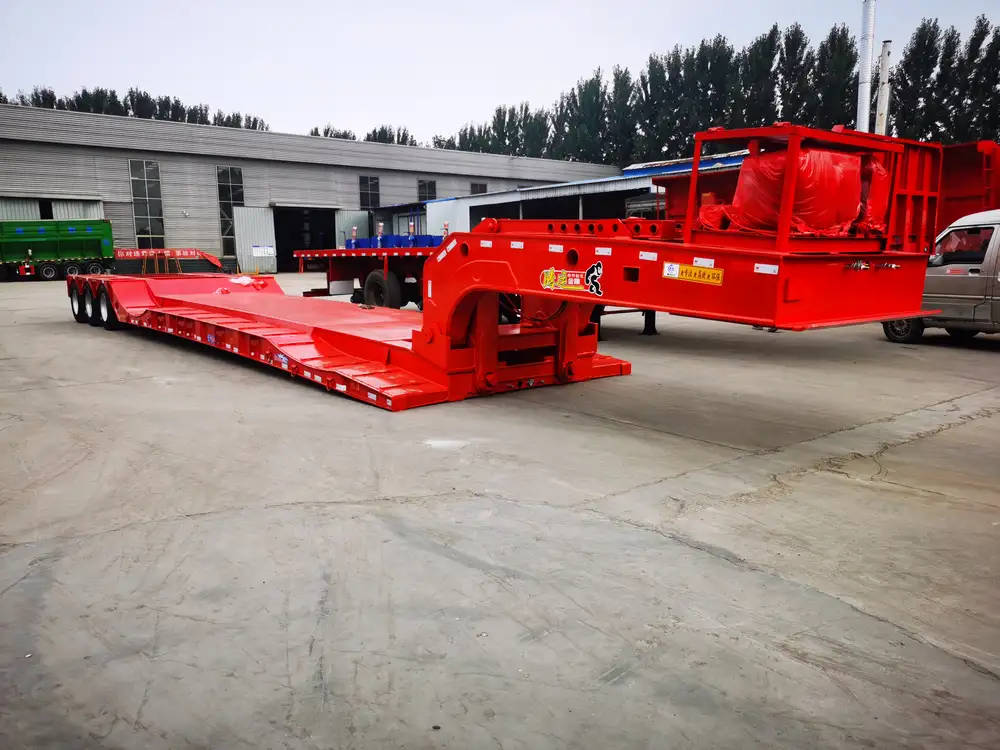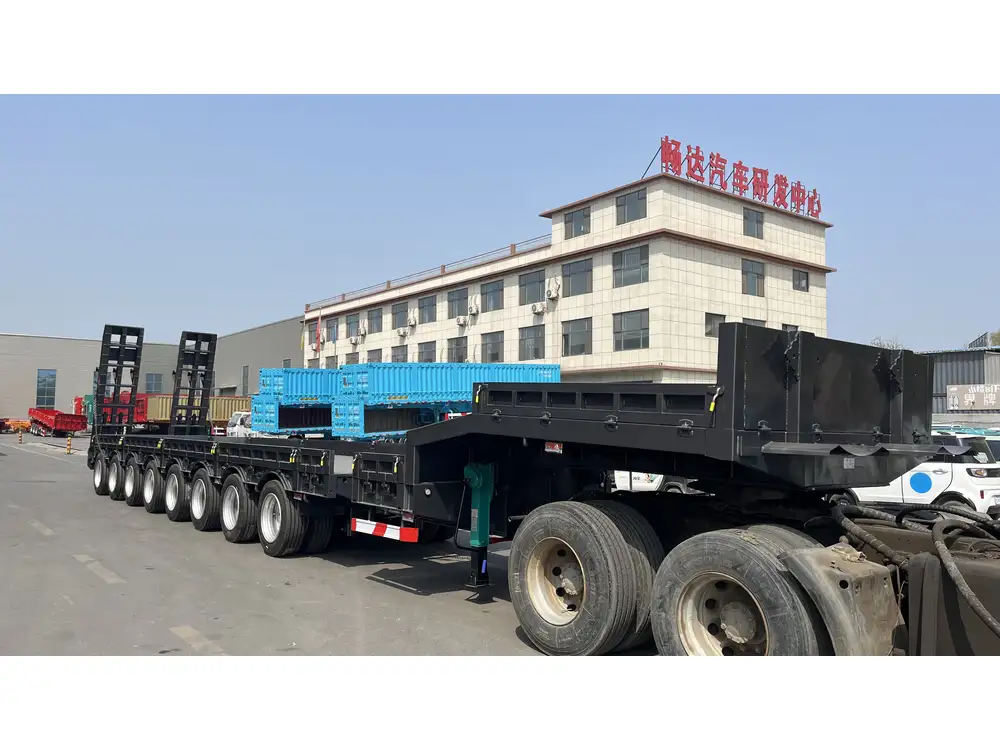Replacing the brakes on a semi-trailer is a critical maintenance task that ensures both safety and performance. Neglecting this essential component can lead to hazardous situations and costly downtime. In this article, we will delve deeply into the step-by-step process of replacing semi-trailer brakes, addressing common challenges, solutions, and best practices to ensure that your replacement task is executed flawlessly.
Understanding Semi-Trailer Brake Systems
Before embarking on the replacement process, it is crucial to understand how semi-trailer brake systems function. Typically, semi-trailers are equipped with air brake systems, consisting of several key components:
- Brake Chambers: These apply pressure to the brakes when air is supplied from the tractor.
- S-Cam Shafts: These convert the linear motion of the brake chambers into the rotational motion that applies the brake shoes against the brake drum.
- Brake Shoes: These are the primary friction components that come into contact with the brake drums to slow down or stop the trailer.
- Brake Drums: The cylindrical components that house the brake shoes and provide a surface for the shoes to press against.
Types of Brake Systems
There are primarily two types of brake systems used in semi-trailers:
- Drum Brakes: Traditional, cost-effective, and reliable, but they can overheat and fade under heavy use.
- Disc Brakes: Offer better cooling, reduce brake fade, and generally provide superior stopping distances.

Signs That Brake Replacement Is Necessary
Knowing when to replace your semi-trailer brakes is vital. Some warning signs include:
- Decreased braking effectiveness: If the trailer takes longer to stop, it may indicate worn brakes.
- Unusual noises: Grinding, squeaking, or clunking sounds suggest that the brake components are damaged.
- Vibration during braking: This can be a sign of warped brake drums or uneven brake shoes.
- Increased stopping distance: If it seems like the trailer requires more distance to come to a complete stop, a brake inspection is overdue.
- Visual wear indicators: Inspecting the brake shoes and drums can reveal cracks or significant wear that necessitates replacement.
Tools and Materials Required for Brake Replacement
Having the right tools and materials is crucial to perform a successful brake replacement. Here’s what you will need:
Tools
| Tool | Purpose |
|---|---|
| Air socket wrench | To remove and secure lug nuts. |
| Torque wrench | Ensures proper torque specifications are met. |
| Brake spring tool | For safe and effective removal and installation of springs. |
| Hammer | To aid in removing stubborn components. |
| Pry bar | Useful for leveraging stubborn parts loose. |
| Inspection mirror | Helps to inspect hard-to-reach areas. |

Materials
| Material | Description |
|---|---|
| Brake shoes | Replace with OEM or high-quality aftermarket parts. |
| Brake drums | Inspect for damage; replace if necessary. |
| Brake hardware kit | Contains springs and other fasteners needed for installation. |
| Lubricant | Anti-seize compound for ease of installation. |
Step-by-Step Guide to Replacing Semi-Trailer Brakes
Step 1: Safety Precautions
Safety is paramount when working on heavy machinery. Before starting, wear appropriate personal protective equipment (PPE) including gloves and safety goggles. Ensure that the trailer is on a flat surface, and engage the parking brakes. Using wheel chocks to prevent rolling is also advisable.

Step 2: Remove the Wheel
- Loosen the Lug Nuts: Using the air socket wrench, slightly loosen the lug nuts before lifting the trailer.
- Lift the Trailer: Employ a hydraulic jack to lift the axle, then support it securely with jack stands.
- Remove the Wheel: Fully remove the lug nuts and take off the wheel to expose the brake assembly.
Step 3: Inspect Brake Components
- Visual Inspection: Examine the brake shoes, drums, and hardware for visible wear or damage. Check for cracks, scorched areas, and irregular wear patterns.
- Measure Drum Thickness: Use a caliper to measure the brake drum thickness. If it falls below manufacturer specifications, replacement is necessary.
Step 4: Disassemble Brake Components
- Remove the Brake Shoes: Start by using the brake spring tool to carefully disconnect the tension springs. Remove the primary and secondary shoes, noting their orientation for reinstallation.
- Detach the S-Cam and Brake Chambers: Unscrew and remove the bolts connecting the S-cam and brake chambers, being careful to retain the mounting hardware.

Step 5: Clean and Prepare the Brake Assembly
- Clean the Brake Drum: Use a wire brush or grinder to remove debris and contaminants from the brake drum surface.
- Lubricate Points: Apply lubricant where necessary, particularly on pivot points and contact areas, to ensure smooth operation.
Step 6: Install New Brake Components
- Install New Brake Shoes: Position the new brake shoes in their corresponding places. Following manufacturer specifications, attach them using the existing or new hardware from the brake hardware kit.
- Reconnect the S-Cam and Brake Chambers: Ensure that the S-cam is oriented correctly and connects seamlessly with the brake shoes. Reinstall the brake chambers and secure with bolts.
Step 7: Reassemble and Test
- Reattach the Wheel: Place the wheel back on the hub, tightening the lug nuts by hand first.
- Lower the Trailer: Carefully lower the trailer back to the ground and fully secure the lug nuts in a crisscross pattern using the torque wrench according to specifications.
- Test Brakes: Before hitting the road, perform a functional test of the brakes. Hook up the trailer to the tractor and test the brake system at low speeds.

Maintenance Tips to Extend Brake Longevity
Maintaining your semi-trailer brakes is as essential as the initial replacement. Here are effective maintenance tips to extend brake life:
- Regular Inspections: Conduct visual inspections of brakes every 5,000-10,000 miles to catch wear early.
- Check Brake Fluid Levels: Ensure the brake fluid is within manufacturer-recommended levels and free from contamination.
- Brake Adjustments: Implement periodic adjustments as needed, especially for drum brakes, to maintain optimal performance.
- Monitor Brake Temperature: Use temperature sensors to monitor brake heat during operation; overheating can significantly reduce brake lifespan.
- Educate Drivers: Train drivers on safe driving practices that minimize brake wear, such as not riding the brakes and providing adequate stopping distance.
Conclusion
Replacing semi-trailer brakes might seem intimidating initially, yet, with the right tools, knowledge, and diligence, it can be straightforward. Ensuring a safe and efficient brake system is essential for the safe operation of any heavy vehicle. By following this comprehensive guide, you not only protect your investment in equipment but also enhance road safety for everyone. For further insights, detailed diagrams, or personalized assistance, don’t hesitate to reach out to certified professionals.
Frequently Asked Questions (FAQs)
1. What are the costs associated with replacing semi-trailer brakes? Costs can vary significantly based on the brake type, quality of components chosen, and labor charges. Typically, materials range from $200 to $1,000 per axle depending on the components used.
2. How often should semi-trailer brakes be inspected? It is advisable to inspect brakes every 5,000 miles or as part of regular maintenance schedules to catch signs of wear before they become a significant issue.
3. Can I perform brake replacements myself? While it is feasible for someone with mechanical knowledge to perform the replacement, always prioritize safety and ensure you have the right tools and facilities.
4. What if my brakes feel spongy after replacement? A spongy brake feel often indicates air in the brake lines. Check the system for leaks and consider bleeding the brake lines to remove trapped air.
By keeping your semi-trailer brakes well-maintained and promptly replacing components when necessary, you can avert potential dangers and enhance both the performance and lifespan of your trailer.



